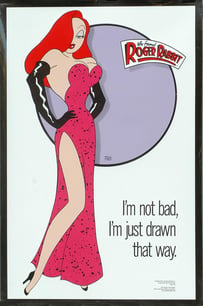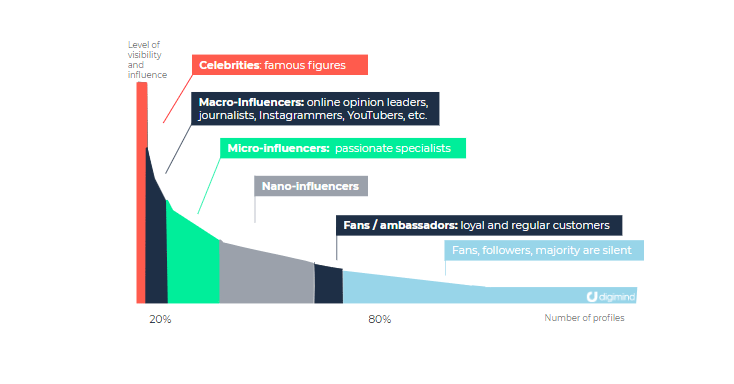10 Rules for Choosing Your Social Media KPIs
How do you choose social media KPIs to track your digital marketing activities?
- Locate yourself in the Marketing Conversion Funnel
- Don't label certain KPIs as "bad"
- Customize your indicators
- Consider qualitative metrics
- Analysis
- Benchmark KPIs
- Strategy and KPI consistency
- Use measurement and collection tools to analyze your data
- Select your KPIS
- Upgrade your KPIs on a regular basis
There are dozens of possible indicators to track and demonstrate the value of your marketing and social activities. It's a known fact that there are a myriad of relevant social media KPIs for tracking brand awareness, follower acquisition, community interactions, conversion or customer satisfaction. However to enrich your classic KPIs, it's necessary to think "outside the box" and look for original indicators.
For these indicators to be trackable and easy to measure, your marketing team needs to select a few (among hundreds), which when paired with your objectives, will become your KPIs. Below are some rules and tips, collated from our social media monitoring projects (campaign monitoring, trend analysis, competitive intelligence, content marketing, consumer insights, e-reputation, crisis management, identification of influencers, etc.) to help you best choose your social media KPIs.
Guide: 20 Essential KPIs to Optimize Your Social Media ROI
#1 Locate Yourself in the Marketing Conversion Funnel
In digital marketing, the marketing funnel (conversion funnel) represents the transformation of an Internet user to customers, or even better, brand ambassadors.
Understanding where you lay on this conversion funnel will help you to better specify your objectives and, in turn, your KPIs.

↑ The marketing conversion funnel
When applied to social media marketing, the funnel can be used to organize data collected on social networks and online channels. It shows the qualification of leads by the marketing team (marketing qualified lead), then fed to sales department (sales qualified lead).
#2 Don't Label Certain KPIs as "Bad"

There is no such thing as a good or bad KPI. Your KPIs should align with your company and department objectives. If they do not, they are unsuitable. Therefore “bad” KPIs are actually “inappropriate” KPIs.
KPIs are your allies. Having quantified performance indicators allows you to carry out your objectives on time, evolve them, and optimize your efforts accordingly.
#3 Customize Your Indicators

KPI’s must be customized to correspond as closely as possible to your daily activities and means. For example, if your activities (community management, social selling, or ads) focus on Twitter, your KPI, "growth of social media communities", would be too broad. It would need to be refined (growth of followers) or segmented by web media (Twitter, Facebook, blogs, Instagram, etc.).
For such customizations, you can also integrate regional, product, or demographic targets. Benchmarking indicators with your main competitors is also helpful a helpful method to understand how you stand. (eg: growth of your engagement rate on Twitter UK vs. growth of that of your competitor).
#4 Consider Qualitative Metrics
Not everything is quantifiable. Qualitative metrics can help with the comprehension and analysis of KPIs, but are more difficult to measure and can't be tied to a specific number. For example, defining quantitative indicators when selecting influencers to work with via qualitative indicators (whether they are a stars, fans, ambassadors, experts) will provide a better understanding and analysis of your KPI.
 ↑ Types of Influencers on Social Media
↑ Types of Influencers on Social Media
Qualitative analysis is often necessary to supplement quantitative indicators that are sometimes difficult to interpret. For example, when companies experience unexpected buzz, it may not necessarily be negative, or it may be coming from specific demographics. This has happened before, when celebrities unexpectedly mention brands or when employees behave in certain ways. In these scenarios, quantitative analysis is not sufficient to understand the impact on the company, and qualitative analysis is required.
Guide : 20 Essential KPIs for Optimizing your Social Media ROI
#5 Analysis
There is no point in determining KPIs, if beyond a simple performance report, you do not analyze them. KPIs need to be placed into context per period, depending on your marketing actions, budgets, and resources. The analysis should ideally predict the performance of future actions (predictive) as well as improve the entire process (prescriptive).
Analyzing KPIs by comparing them across time allows you to measure the real impact of a communication campaign, a trending opinion, or bad buzz. For example, on the day after the campaign, September 4th, there were more than 2.13 million mentions on Nike and more than 17 million mentions accumulated in a single week. 17 million mentions?! What does this really mean?
By looking through historical trends in mentions about the brand on social channels, using Digimind Historical Search, we were able to observe that over the last 2 years, Nike generated an average of 2.3 million mentions per month. Hence, 17 million mentions in a week is a considerably large amount; probably the most chatter Nike had had in awhile. As expected, most mentions took place on social media platforms.
 ↑ Comparing Nike's KPI Overtime
↑ Comparing Nike's KPI Overtime
#6 Benchmark KPIs
A KPI is good, but a KPI with a benchmark is better. If you have access to have numbers that can help you determine metrics, use them. It will improve the relevance and legitimacy of KPIs and motivate you to reach that benchmark. For example, if your main competitor generates an average engagement rate of 3% for images and 5% for videos on Instagram, you can use these numbers to set objectives. However, going back to point #3, remember to customize these metrics based on your resources and current performance.
↑ Benchmark of competitors' social accounts to have reference indicators (via Digimind Social Analytics.)
#7 Strategy and KPI Consistency
Your choice of marketing strategy and the selected KPIs must be consistent and correlate in order for it to be meaningful. For example, suppose you engage in an influencer marketing strategy, and decide to work with micro-influencers.
The benefits of influencers with smaller audiences reside in their higher engagement rates and authenticity. In short, micro-influencers won't get you large audiences, but will generate qualitative relationships in targeted communities. These aspects are expanded on in our guide: Harness the Power of Micro-Influencers for Your Brand.
Therefore in such a case, to measure the impact of your chosen micro-influencers’ on the campaign, avoid KPI indicators such as reach or audience generated (used more for macro-influencers). Rather use engagement rates, generated interactions, and the most effective messages.
#8 Use Measurement and Collection Tools to Analyze Your Data
Make sure you’re equipped with the right tools to accurately measure and listen to social data. It's important to also track metrics from CRM and marketing automation platforms to develop your indicators holistically (mentions, audience, leads, engagement, etc.). With such tools, you can automate data collection and reporting for multiple marketing activities.
↑ Indicators from the Twitter Ads Manager
The challenge lies in the ability to share information between different tools so data is not siloed, is comparable across the marketing funnel and consistent with the original sources (websites, blogs, social networks, customer relationship, etc.).
#9 Select Your KPIs
Too many KPIs kill a KPI. Although there are many indicators to measure the performance of your actions in digital marketing and social media, don't get too greedy. To avoid deviating from the initial project objectives and complicating collection and reporting, choose 1 or 2 KPIs according to the relevant marketing phase (awareness, satisfaction, interaction, etc.) Test them for several weeks to determine which are the most coherent with your objectives. Do this by grouping and regularly monitoring other indicators.
will have to manage 3 to 4 social media KPIs related to your job or strategy objectives and dozens of indicators to illustrate, explain, and comment on your KPIs. The ideal configuration should allow you to have a global vision across three axes of digital marketing management: social media, digital, and business indicators.
The report structure should allow all members of a team to follow various indicators by breaking the silos, from the acquisition of a fan on social networks to the final sale. 
↑ 3 Types of Digital Marketing KPIs
#10 Upgrade KPIs on a Regular Basis
Digital marketing domains and metrics, capabilities of data collection, and measurement tools are constantly evolving. Stay alert to new, relevant KPIs for your work objectives.

↑ "Analytics" now covers many activities of the marketing function (1).
↑ 10 Rules for Building your Social Media KPIs (ebook 20 Essential KPIs for your Social Media ROI)
(1) The CMO Survey Duke University’s Fuqua School of Business with Deloitte LLP and the American Marketing Association
Written by Alina Taher
With a background in consumer economics, marketing, and international business, Alina is a Digiminder passionate about global market insights. In her free time, you can find her reading historical fiction or re-watching old star trek episodes.





